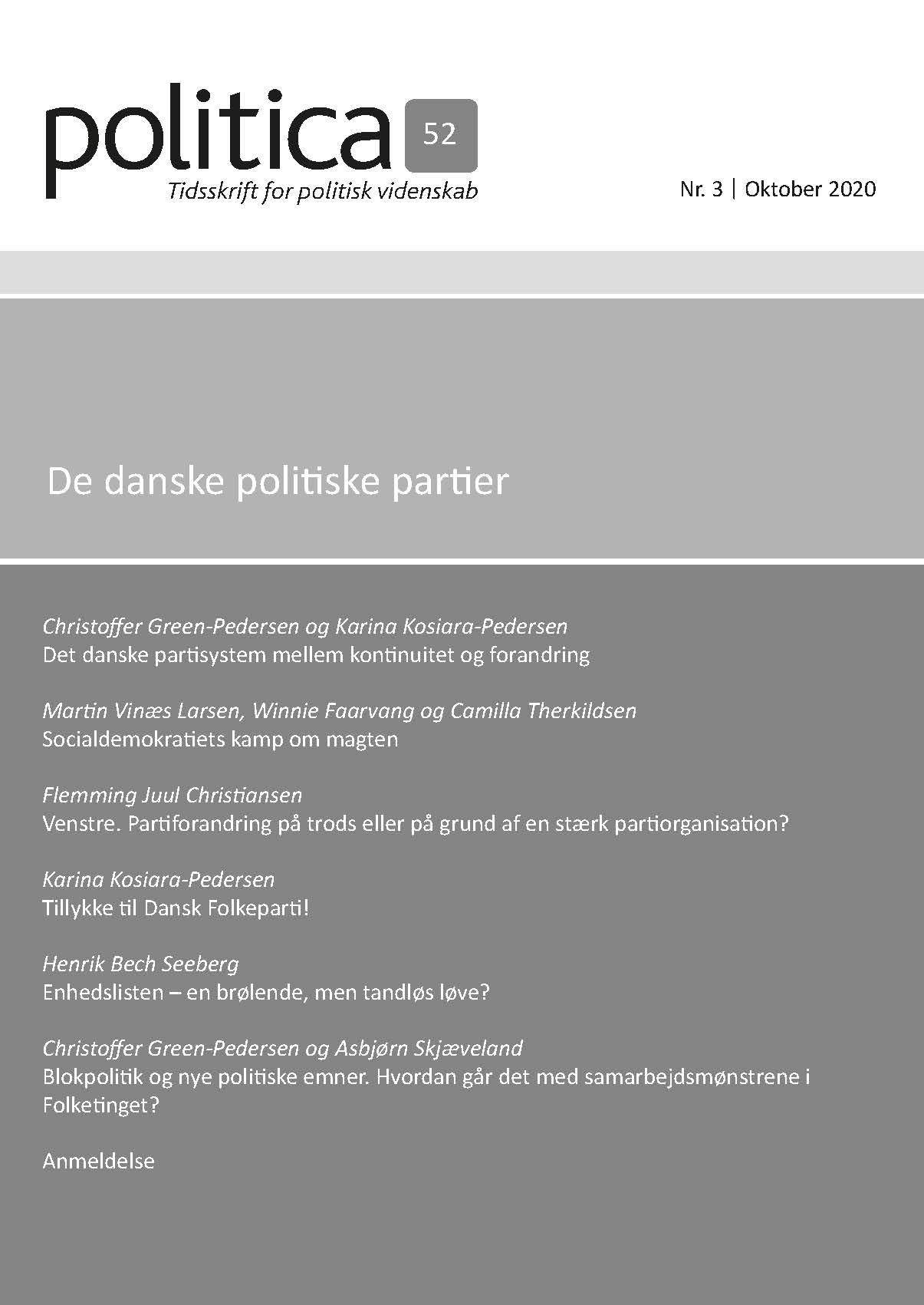The Liberal Party: Party change despite or because of a strong party organization?
DOI:
https://doi.org/10.7146/politica.v52i3.130820Nøgleord:
party change, party organization, liberal parties, agrarian parties, class-based voter behavior, public policyResumé
In 2020, the Liberal Party of Denmark (Venstre) celebrated its 150-year jubilee. After 2001, the party dominated government formation and occasionally became the largest party in the electorate after dwindling support until the 1980s. The party managed to transform itself from a class-based party with strong support from rural areas to a catchall centre-right party. The article uses Harmel and Janda’s (1994) party change perspective to study the case of the Liberal Party, in particular since the 1980s. It notes that the party made ideological changes, first in a neo-liberal, and later in a more centrist direction, both times with inspiration from abroad. Leadership changes and internal trouble in the Conservative Party also catalyzed changes. The Liberal Party did not change its organization until after it had gained voters and office, and the relative strength of its party organization did not prevent changes, unlike what the theory would expect. Instead, it seems to have provided the party with more resources and time to make a change. The article discusses the party’s influence on public policies and its general situation in 2020, having lost the general election of 2019, with a new party leader, and fewer party members.
Publiceret
Citation/Eksport
Nummer
Sektion
Licens
LicensOphavsretten tilhører Politica. Materialet må ikke bruges eller distribueres i kommercielt øjemed.





